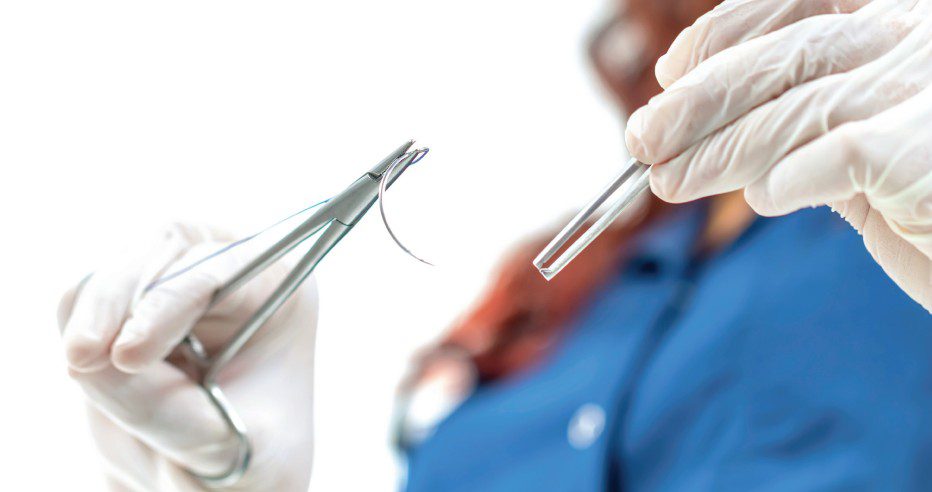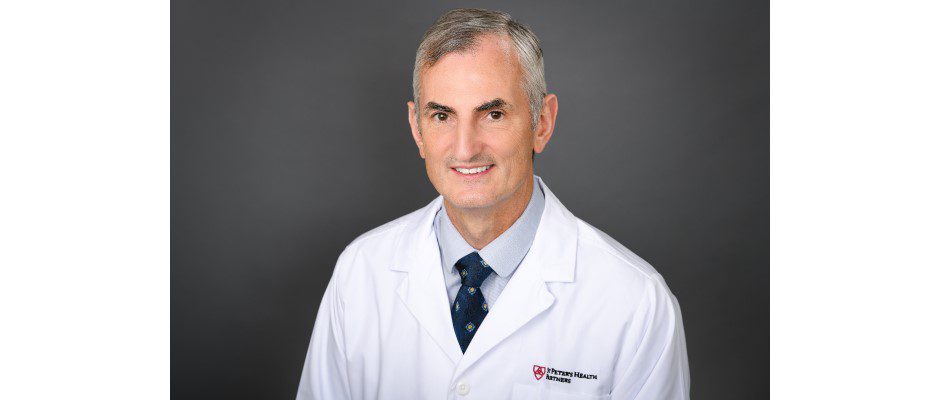
[By Katrina Kardos, MD, Medical Director, Emergency Department, Samaritan Hospital.]
Maybe you’ve cut your hand in the kitchen, or one of your kids fell on the driveway playing basketball, or a running partner took a header while jogging. If it’s a minor scrape, you clean the wound, bandage it up, and you’re back in business. Sometimes, though, it is a more severe injury that won’t stop bleeding – it’s time for expert medical treatment.
The good news is physicians and midlevels in the urgent care and emergency department settings have a variety of options at their disposal when treating lacerations and abrasions. The type of material and technique the provider uses will depend on the injured person’s age, type of injury, and location of the injury.
Sutures (Stitches)
This is the most common technique for closing skin wounds. A doctor uses a piece of surgical thread called a suture to sew (or stitch) two sides of the laceration (cut) together. Sometimes one layer of stitches is needed, but deeper cuts may require multiple layers. Sutures are recommended for:
- Deeper wounds that might take a longer time to heal
- Wounds within a hairline or through an eyebrow
- Wounds with damage to underlying muscle or tendons
- Wounds in areas of high skin tension such as over a joint or in an area that moves a lot (face)
- Wounds that have a high risk of infection, such as animal bites, may be loosely closed if they are gaping. But due to the high risk of infection, these are often left open or loosely closed to allow for drainage.
- Wounds to mucus membranes, lips, and genitalia (in cases of injury to these areas, come to the emergency department rather than urgent care as these areas often require specialized attention and care)
Surgical Glue
Surgical glue – also called “skin glue,” “tissue adhesive,” or “liquid stitches” – is a common alternative to traditional stitches. The main advantage of surgical glue is it is quick and virtually painless to use. Additional benefits include:
- Lower rates of infection
- No injections of pain medication or stitches, which is an excellent option for a young child (who might otherwise need to be sedated or restrained)
- Quicker return to work and other activities, like sports
- No stitches to remove
- There are criteria that need to be met to use skin glue. The provider will discuss the risks and benefits with you after they evaluate your wound.
If you have sensitive skin or certain allergies, surgical glue may not be a good option for you. It also is not recommended for individuals with an increased risk for slow wound healing (such as patients with diabetes or edema).
Adhesive Tape
Doctors sometimes use sticky strips of medical tape to pull together the edges of minor skin wounds. Your doctor may use adhesive tape if you have a minor cut or laceration in a low-tension area.
Staples
Medical staples allow your doctor to quickly close longer wounds with minimal damage. They are often used for wounds with straight, sharp edges that are located on the scalp, trunk, arms, and legs.
When every second counts, St. Peter’s Health Partners has top-quality emergency departments and urgent care centers all across the Capital Region. Our emergency departments in Albany and Troy are open 24 hours, seven days a week, offering a wide range of services for emergency care with highly trained staff, diagnostic testing and access to specialists.
For more information, visit us at sphp.com/for-patients/think-before-you-go. Be well!





